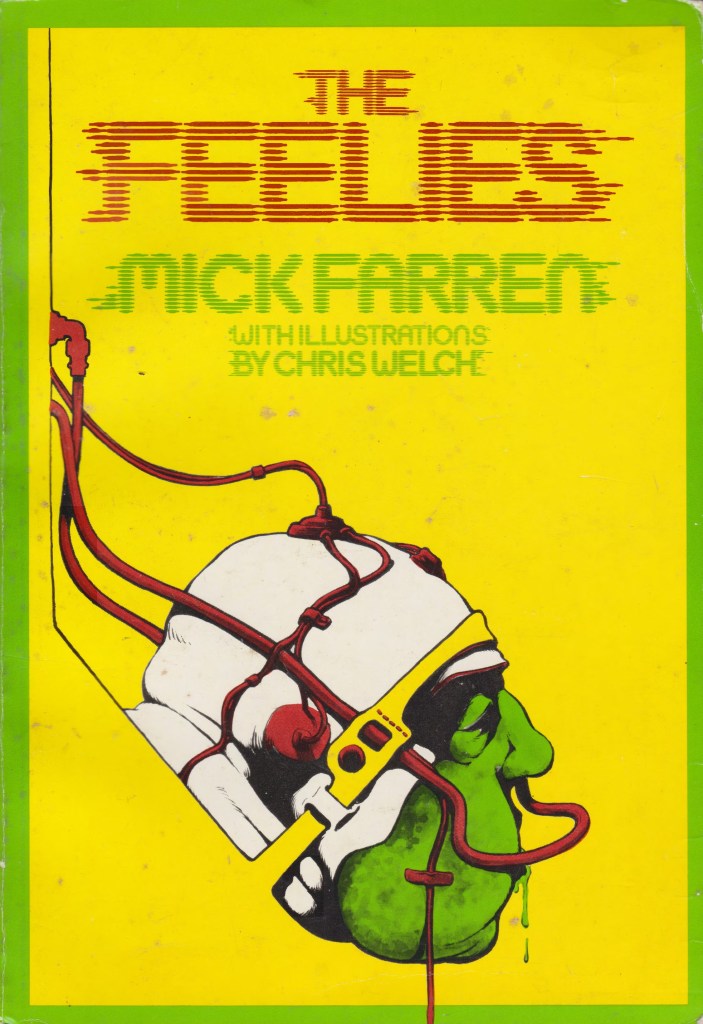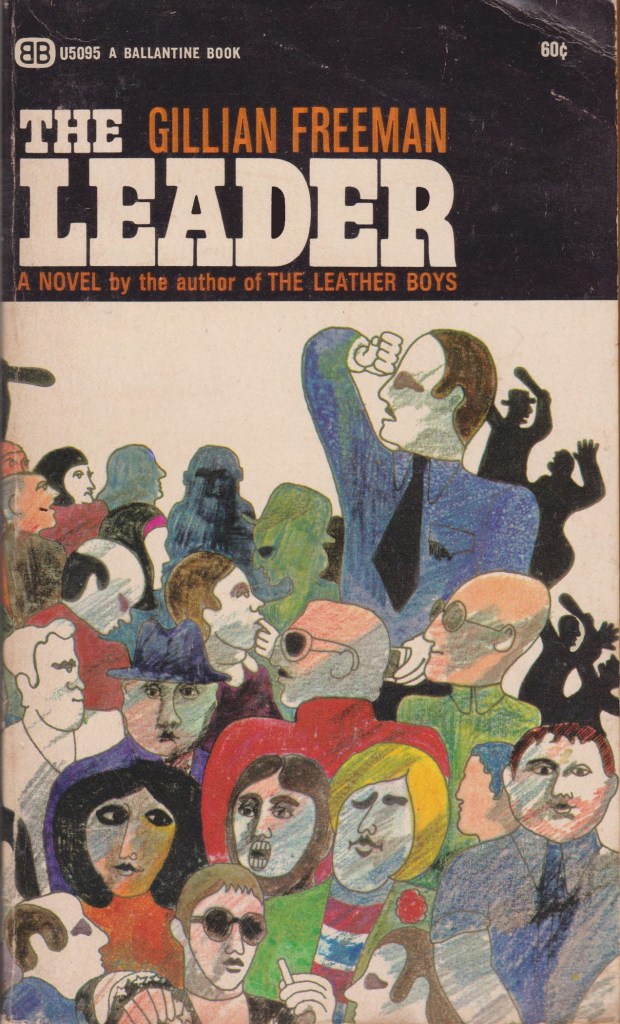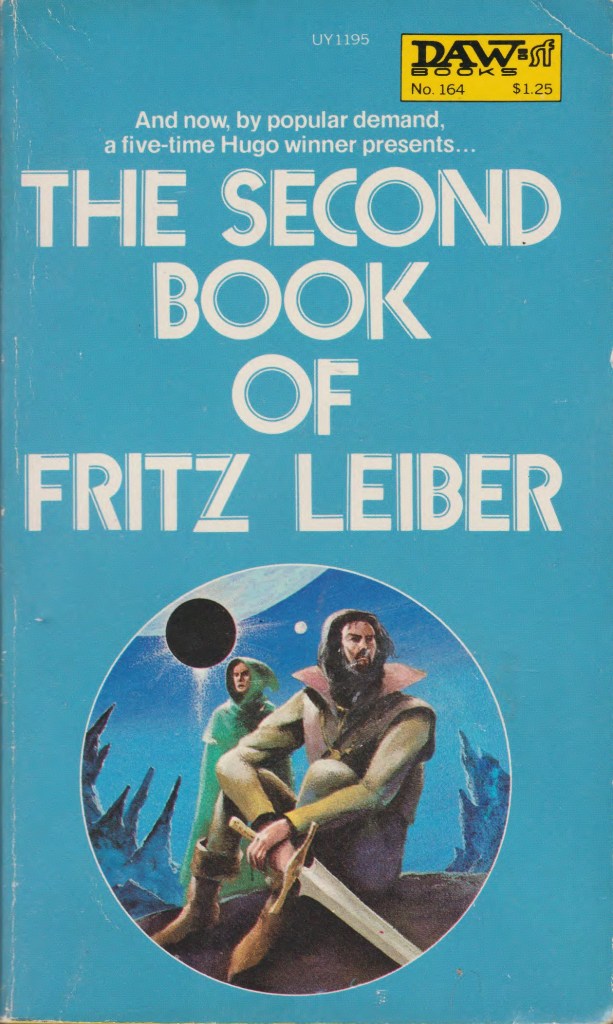A new year and new books!
Which books/covers/authors intrigue you? Which have you read? Disliked? Enjoyed?
1. From the Land of Fear, Harlan Ellison (1967)

Diane and Leo Dillon’s cover for the 1st edition
From the back cover: “SCIENCE FICTION STORIES by Award Winning Author
WHERE DID HARLAN ELLISON COME FROM?
At 13 he ran away from home in Ohio and joined a carnival. At 15 he was driving a dynamite truck in North Carolina. At 19 he was thrown out of college and at 21 had sold his first novel. Today he is 33 and is considered one of the top screenwriters in Hollywood. Fairly ordinary background? True.
But somewhere along the way, Harlan Ellison made a strange detour. He vanished into a country of the mind where time and space ceased to exist, where strange ideas and wild adventures were commonplace. He came back from that dark world, carrying away with him its richest treasures: stories unlike any ever told before. In this unusual book you will sample these “stray dreams.”
FROM THE LAND OF FEAR!”
Contents (fiction only): “The Sky Is Burning” (1958), “My Brother Paulie” (1958), “The Time of the Eye” (1959), “Life Hutch” (1956), “Battle Without Banners” (1964), “Back to the Drawing Boards” (1958), “‘We Mourn for Anyone…'” (1957), “The Voice in the Garden” (1967), “Soldier” (1957), “Soldier” (1957) (screenplay).
Initial Thoughts: I recent finished over my winter break a fascinating monograph on Harlan Ellison–Ellen Weil and Gary K. Wolfe’s Harlan Ellison: The Edge of Forever (2002). It inspired me to track down more of his fictions. I snagged the monograph as I thoroughly enjoyed the two stories of his I reviewed for my series on subversive accounts of space travel.
What are your favorite stories from this collection?
2. The Feelies, Mick Farren (with illustrations by Chris Welch) (1978)

Chris Welch’s cover for the 1st edition
From the back cover: “Some time in the future in a world of gleaming glass and megastructures, interspersed with slum remains, society is set in rigid economic groups. The ultimate goal has become a lifetime in The Feelies–hooked up to sensory input machines, entombed in coffin-like structures, living out private fantasies manufactured to order. For most it remains an impossible dream: drink, drugs and 24-hour TV blur the edges of a reality they seek to erase. Only the rich and powerful can afford the ultimate luxury of eternal feelie time. But a few like Wanda Jean have just once chance in a lifetime–to win the TV contest Wildest Dreams and take her place in the lifer vaults. Yet even a mechanical dream can turn into a technician’s nightmare–the results are literally mind blowing.”
Initial Thoughts: I’ve only read one Mick Farren novel–The Texts of Festival (1973). It was average. But due to my media series I thought this short-ish novel might be something I cover (albeit it has focused on short fiction so far). I deliberately tracked down the first UK edition as it was revised for the 1990 US edition. Personally, I’m far more interested in 70s dystopic visions of media nightmare vs. late 80s/early 90s.
3. The Leader, Gillian Freeman (1965)

Uncredited cover for the 1968 edition
From the back cover: “Vincent Wright, as he comes to call himself, fancies that he is different from the other clerks in the bank. In the privacy of his own apartment, standing on the sofa to look in the mirror, he invents a new salute and dreams a dictator’s dreams… THE LEADER.”
Initial Thoughts: I buy far more near future rise of fascism in the UK novels then I’ll ever read… BUT. I know little to nothing about this novel so it might it might be a hidden gem. Gillian Freeman seems best known for her novel The Leather Boys (1961)–one of many novels about juvenile delinquency and early swinging London i.e. Only Lovers Left Alive (1964). The Leather Boys was adapted into a film in 1964. The Leader seems mostly forgotten…
4. The Second Book of Fritz Leiber, Fritz Leiber (1975)

Jack Gaughan’s cover for the 1st edition
From the back cover: “Have a literary cocktail with writer Lin Carter calls ‘probably the finest living writer of sword and sorcery,’ and whose five Hugos prove his equal status in the realm of science fiction. Here’s what Fritz Leiber is offering, in his own words”
Contents (fiction only): “The Lion and the Lamb” (1950), “Trapped in the Sea of Stars” (1975), “Belsen Express” (1975), “Scream Wolf” (1961), “The Mechanical Bride” (1954)
Initial Thoughts: Three Fritz Leiber short stories appeared on my favorite 20 short fictions I read in 2022. The only other author to appear three times in the favorite read categories was Vonda N. McIntyre. And I plan on continuing my explorations of his work in 2023.
For cover art posts consult the INDEX
For book reviews consult the INDEX
For TV and film reviews consult the INDEX
I’ve read and enjoyed some of the stories by Harlan Ellison from the sixties, including some of those in the above collection. I’ve only read a few stories by Fritz Leiber, and would like to read more.
I recently read Leiber’s “The Moon Is Green” (1952) — highly recommended: https://sciencefictionruminations.com/2022/12/29/short-story-reviews-fritz-leibers-the-moon-is-green-1952-and-sonya-dormans-go-go-go-said-the-bird-1967/
Many thanks, Joachim! I’ll see if I can find these.
And of course, his collection A Pail of Air contains many gems: https://sciencefictionruminations.com/2013/09/23/book-review-a-pail-of-air-fritz-leiber-1964/
And I reviewed two wonderful ones for my media series: https://sciencefictionruminations.com/2022/02/20/future-media-short-story-reviews-fritz-leibers-the-girl-with-the-hungry-eyes-1949-and-a-bad-day-for-sales-1953/
Both stories in the latter post appeared on my favorite 20 short stories I read in 2022 list that I posted on Jan. 1.
Thanks again, Joachim! (But isn’t the collection you refer to called A Pail of Air, like the story?)
Yeah, slip of the tongue after a long day at work…
Hope you get some rest, Joachim!
P.S. I haven’t yet read “The Girl With the Hungry Eyes,” but I enjoyed the Night Gallery adaptation of this story. Have you seen this, by any chance? (I’ve watched most of the series on DVD.)
I have not. I must confess, I watch very little SFF film or TV. For whatever reason…
Understood, although some of their adaptations of classic SFF are good ones.
Probably better than the horridly rated 1993 movie version I just found out about! https://www.imdb.com/title/tt0113175/?ref_=nm_flmg_c_3_wr
I haven’t seen that one. Of course there are some dismal adaptations of various SFF stories, but some good ones as well. A few even improve on the stories they’re adapted from, such as adaptations of two Lovecraft stories, “Cool Air” and “Pickman’s Model,” on Night Gallery (although I like the original stories as well).
You’ve got a number of works I don’t know by authors I like, which is always interesting to see. I can recommend The Long Orbit, Necrom, and The Last Stand Of The DNA Cowboys if you want to read more Mick Farren.
I have a copy of The Last Stand of the DNA Cowboys as well. Doesn’t look like I featured it in a purchase post… it must have escaped the pile waiting to be documented.
Honestly I haven’t read any of these books. The Ellison seems minor relative to his oeuvre — the only one I remember reading is “Life Hutch” which is a competently executed gimmick story. I do suspect, however, that this is an attempt to collect some of the best of his ’50s fiction — that said, I don’t personally think he really got good until roughly 1964 or 1965 — coincidentally about the same time Silverberg and Brunner got good!
The Leiber also seems a collection of lesser stories, though to be honest I’ll happily read minor Leiber before I read anything but the best of Ellison.
I have heard of Farren but haven’t read him, and Freeman is completely new to me.
But there are many Silverberg and Brunner 1950s short stories worth reading! I think Ellison’s 50s stories are completely worth picking through (I enjoyed the two I reviewed recently) — and yes, I suspect many are clunkers. I’m looking at you “Glowworm” (1956).
I tracked down the Leiber collection for one story alone — one of his other attempts (I reviewed better known “The Moon is Green” recently) to parse the patriarchal forces that dictate the paths women can take: “The Mechanical Bride.” I then realized I already owned the story in another collection… alas.
Oh, undoubtedly there are a number of stories by all three writers written in the ’50s that I worth reading — just not quite at the level of their best work which they began producing in the early to mid-60s.
That’s a Farren I’ve heard of but never come across! I read the first three DNA Cowboys books decades ago (as I may have mentioned before) but haven’t revisited for some time. I suspect I might find some of the elements troublesome nowadays…
I’d never seen the UK edition in the wild but I know I’ve seen the 1990 US edition. Unfortunately the US edition was updated….
I’ve already mentioned “Life Hutch”. I hadn’t read “The Time of the Eye” for very many years. It’s a much better piece than than the other one, being a more uncertain but bitter and terrifying account about loss, sacrifice, morality and gain.
The Leader seems mostly forgotten…
Yes indeed. Too grim for most people to want to recall.
Did you read it? But yes, it seems grim….
Yes. Never again.
Because it was too “real” or because it was bad?
Because it offered small pleasures for large upsets…I don’t know how to express it better. “I didn’t enjoy that enough to be this deranged”?
I read The Leader a bit over a decade ago and liked it a lot. The cultural context is very 60s England (the “protagonist” is of a mid-century upbringing/class position that I’m not sure still exists precisely, but somehow there manage to be plenty of Brexiters who would have gone for him). Happy to see that Valancourt’s put it back into print, it deserves a new audience.
(and obviously, there’s a fragmented-but-organized neo-nazi contingent in the UK that’s never really gone away and continues to work its way into various subcultural spaces — I won’t do them the service of naming them.)
Ah, I had no idea it was reprinted. Unfortunately the isfdb.org listing for the book is mostly incomplete (wrong publication date, no paperback edition listed, etc.).
I read a book recently which screamed Brexit and the rise of pernicious strands of American fascism — Michael Moorcock and Hilary Bailey’s The Black Corridor (1969). It’s evocation of anti-immigrant/”the other” rhetoric was quite disquieting as a central pillar to appealing to one’s base. https://sciencefictionruminations.com/2020/06/08/book-review-the-black-corridor-michael-moorcock-and-hilary-bailey-1969/
The only Harlan Ellison collections I dug into were I Have No Mouth And I Must Scream and Deathbird Stories, the latter of which I enjoyed more. I’m always iffy about short stories from the 50s because I keep thinking they’ll be too ‘clean’ and dated in their subject matter, which is why I prefer the more mature stuff (new wave especially) from the 60s onwards. Knowing Ellison, it might be different.
As for the other books, I’m not aware of them, so it’ll be fun to go in blind.
Well, I hope my review series on 50s views of sex and sexuality might convey that the 50s weren’t so clean! (and all my reviews of subversive accounts of space travel –I’ve featured many from the 50s)
I’ll have to read that.
I’m guessing there was a difference in sensibilities between the UK and US, because I read the British sentient dog novel Sirius (published in 1944) and I was surprised with how graphic it was – and that was the censored version! Putting aside the violence and sex in that novel, I highly recommend Sirius. It’s the dog version of Flowers for Algernon.
I think I have a copy somewhere…. maybe….
Check out my best reads of 2022 list. I have a section near the end with all the links to my 50s review series on sex and sexuality (I just started it last year so I plan on adding more). https://sciencefictionruminations.com/2023/01/01/updates-my-2022-in-review-best-sf-novels-best-sf-short-fiction-and-bonus-categories/
Note: many of the stories in the series fascinated me but were flawed. The historian in me takes over and I get obsessed with the larger idea that they’re a lens on the era.
Also, I read and reviewed two Harlan Ellison 50s short stories recently: https://sciencefictionruminations.com/2022/12/09/short-story-reviews-harlan-ellisons-psycho-at-mid-point-1956-and-the-discarded-variant-title-the-abnormals-1959/